"Digital media is not just a tool for communication; it is the lens through which we now perceive and shape the world around us." — Paul Levinson
Don't wanna be here? Send us removal request.
Text
The Critical Analysis
Han, Y. and Ho, X. (2024). ‘More Than Just Playing a Character’: Gender Exploration and Expression in Avatar Customization. Games and Culture. doi:https://doi.org/10.1177/15554120241307982.
In this critical analysis, I will concentrate on pages 4 – 6 of the article, More Than Just Playing a Character authored by Yisong Han and Xavier Ho. Han is a scholar whose major fields of interest refer to digital media, gender and players’ identity, whereas Ho targets gaming as a social process. In this paper, the authors analyze how avatar customizations in video games facilitate identity expression and enactment of gender non-binary and beyond. The selected section of the paper discusses three central themes related to gender expression and avatar customization: The three major approaches to analysing fashion are: (i) performing and navigating gender (ii) representing identity (iii) experimenting with gender. The authors disagree that avatar customization systems that exist in most games only offer two gender options while players engage in complex ways that move beyond these options. Interviews with 20 gamers of different gender are analysed in the articles, and, based on that, the authors outline how customization enables the reflection of gender as plurality, fluidity, and individuality.
Gender exploration and expression are defined more inventively with the help of Judith Butler’s (1990) gender performativity theory. Based on Butler’s concept of gender as the performance of authentic copies, the authors focus on how gender patterns are performed through avatars in a field of customizable interactions. In addition, there is a theoretical contribution as the results are discussed within the framework of gender and cultural studies.
The paper also describes avatar customization as fluid as players switch between male and female characters during the game. Modifying avatars is a design factor and a control aspect of the avatars that is part of gender exploration (Han and Ho, 2024). This is why free bonus points illustrate the value of flexible customization systems that allow players to continuously self-actualize.
Also, the social and psychological effects of avatar customization are acknowledged in this study. The main ideas are illustrated through participants’ descriptions of how virtual environments allow for testing new identities and are especially helpful for gender-diverse people (Han and Ho, 2024). This is evident with the real-life avatar in which P10 learned her real-life name, suggesting that the system has deep meaning.
As a qualitative study, one of its most significant assets is its ability to expound on the participant’s experiences in detail; however, the study's sample size only 20 applicants, restricts the generalizability of the results. The authors also strive for gender and geographic diversity, although the broader culture and demographic diversities continue to lag. For example, how the titled factors interact with gaming technology elements, and accessibility might contribute to understanding other facets of avatar customization.
Nevertheless, the study has research weaknesses, which if worked around in following research, could offer some worth insights. The time duration in which the survey was conducted and the number of responses collected from only 20 players also limit the extent of generalization of the results. The authors use the data based on the respondents’ own reports, and self-report measures may have various biases, particularly, while addressing the issues regarded as sensitive, such as gender identity. Further, all the players are from different countries, but there is no extensive discussion of possible cultural influences on the gender investigation and representation in games. For instance, female players from parts of the world where the traditional gender roles are well observed will experience a different level of difficulties or has a different experience compared to players from societies where there is equality handed down by the laws of the nations.
Given the study’s results, game designers and developers will significantly benefit. Through the given article, the authors share concrete suggestions to eliminate players’ necessity for the gender-lock matrix, emphasizing the need to create more fluid and diverse customization systems. Current Trends, the choice in Gender expression is also a part of it with adaptation, such as nonbinary pronoun usage, various body types, and fluid customization, all present to expand options in gaming.
Further, the study advances theories about games in identity construction and socialization processes. The concentration on gender exploration is also consistent with theories about Virtual Reality environments as self-identity development terrains. From this angle, games are used as instruments of power focusing on the enablement of the disadvantaged. The study also raises ideas in relation to the ability of the customization systems for avatars to cater for the individual identity as well as community construction within the gaming environment. Thus, different gender display accounts for the ability of games to provide representation and help in validating players’ existence. This inclusivity is beneficial as it can foster a culture technological inclusion by forming new positive online communities that can curb instances of toxicity and discrimination much related to gaming cultures. In addition, as gaming intertwines with other new media, like social and virtual, universally designed customization features may set a standard for other sectors regarding acting as the places for minorities’ inclusive representation.
On the one hand, the work contributes to the use of queer theory and intersectionality concepts in game studies from a theoretical point of view. By questioning the conventional roles and restrictions within avatar construction, the authors extend the analysis of how video game spaces can unsettle the real world’s power dynamics. This work also paves the way for future research on how these customization types relate to other cultural narratives in various societies.
Han and Ho’s study presents a convincing portrayal of generality through avatar appearance, supported by detailed qualitative information and solid theoretical frameworks. Nonetheless, the study is bounded by sample size limitations and scope for further research, which offers profound implications for designing more diverse and engaging game worlds. However, the work revealed the capacity of avatar customization systems to overcome the binary approach and contribute to the liberation of multiple players, thereby enriching the exposure of identity possibilities and tools. Applying the principles of flexibility in design and disrupting hegemonic paradigms, the gaming industry can propel positive change.
0 notes
Text
The Reader
Freire-Sánchez, A., Vidal-Mestre, M. and Fitó-Carreras, M. (2024). Proposed Model for Video Game-to-Series Adaptation and Intermedial Translation Based on the Case of Fallout. Games and Culture. doi:https://doi.org/10.1177/15554120241299609. This article by Freire-Sánchez et al. (2024) explores the challenges and strategies involved in adapting video games into television series, focusing on the case study of Fallout to propose a model for intermedial translation. In this paper, the author presents a framework for adapting a video game for a television series, focusing on Fallout. The authors provide profound insights into issues concerning structural and narrative continuity across media. They specifically feature transmedia narratives and intertextuality, which provide essential tips for constructing compelling stories across platforms (Freire-Sánchez et al. 2024). Although this approach sounds more practical, further discussion of the specific audiences and other cultural aspects of adaptation is needed. Gutiérrez, F.L., Medina-Medina, N., Gallardo, J., Paderewski, P. and Cerezo, E. (2024). Supporting Narrative Design in Video Games: Proposal and Case Study with an Educational Video Game. International Journal of Human–Computer Interaction, pp.1–25. doi:https://doi.org/10.1080/10447318.2024.2440143. In transforming educational content into video games, Gutiérrez and colleagues suggest the following approaches: To achieve effective narrative design, academic video games can be developed to build engagement in the learning process and focus more on narrative design while achieving a balance between the two. Their case looks into storytelling's impact on players' learning and motivation (Gutiérrez et al., 2024). The article's purpose is defined as highlighting and explaining what concerns using narrative components for achieving educational goals. Nevertheless, the analysis is quite thorough (Gutiérrez et al., 2024). The leverage of more empirical data investigating the players' outcomes and engagement rates will strengthen the proposed strategies more. Han, Y. and Ho, X. (2024). ‘More Than Just Playing a Character’: Gender Exploration and Expression in Avatar Customization. Games and Culture. doi:https://doi.org/10.1177/15554120241307982.
Han and Ho examine how the customisation process of avatars permits gamers to discover and represent genders in games. Their analysis points out that customization mechanics are for inclusion, especially for persons with demoted status and the psychological impairment on people who play games. This article is instrumental in synthesising knowledge on how design decisions can enable multiple stakeholders and aid in identity construction. However, there is a potential for expanding the gender aspect as one of the intersections with other significant factors in the discussion (Han and Ho, 2024).
Harviainen, J.T., Brown, A.M.L. and Suominen, J. (2016). Three Waves of Awkwardness: A Meta-Analysis of Sex in Game Studies. Games and Culture, 13(6), pp.605–623. doi:https://doi.org/10.1177/1555412016636219.
This meta-analysis considers the representation of sexuality in video games across three significant developmental stages and shifting perceptions in society regarding games, including paying special attention to the changes in the portrayal of sex and sexual content in video games across three distinct periods (Harviainen, Brown and Suominen, 2016). To do so, the authors understandably evaluate how discomfort has shaped players' views and industry norms. This is important as it gives them a profound perspective on how today’s portrayals of sexuality in games can be viewed The best way to understand modern portrayals of sexuality in games is by looking at their historical perspective (Harviainen, Brown and Suominen, 2016). I found this article helpful for the critical perspective on the roles of games in touching topics.
Hines, M. (2023). ‘A Crown is Warranted With Strength’: Bosses, Fantasy, and Democracy in Elden Ring. Games and Culture. doi:https://doi.org/10.1177/15554120231186476.
The two issues that Hines examines pertain to boss characters in Elden Ring, power and democracy in the work of imagination. Altogether, the article claims that boss encounters are a simulation of meritocracy and power, which is an enjoyable experience in the game (Hines, 2023). In particular, Hines’ analyses of semiotic regimes that underlie these designs provide new ways of thinking about game stories and play mechanics. This analysis helps recognize how the design can tap into players’ psycho- and socio-cultural narratives (Hines, 2023). The study could build upon the study performed by the authors and compare the findings to those of other related games.
Hutson, J. and Fulcher, B. (2022). A Virtual Reality Educational Game for the Ethics of Cultural Heritage Repatriation. Games and Culture, p.155541202211317. doi:https://doi.org/10.1177/15554120221131724.
In this article, the author analyses virtual reality (VR) opportunities for education based on an example of an ethical dilemma connected with cultural heritage return. I found Hutson and Fulcher’s article helpful because of the exploration of audience participation and affective response, revealing the prospect of VR for empathy. The author’s identification of the potential dangers of gamification for creating oversimplified cultural narratives should be seen as relevant to ethical game design (Hutson and Fulcher, 2022). Overall, their case study offers practical implemental applications of VR within polymathic learning yet studies restrictions of a small sample and only slight reference to accessibility.
Liu, Y. and Agur, C. (2022). ‘After All, They Don’t Know Me’ Exploring the Psychological Mechanisms of Toxic Behavior in Online Games. Games and Culture, 18(5), p.155541202211153. doi:https://doi.org/10.1177/15554120221115397.
Liu and Agur also study the effects of anonymity and social psychological factors leading to toxic behaviour in online games. Their research suggests several recommendations to help minimise toxicity: Improve cooperation in gameplay and take responsibility (Liu and Agur, 2022). This article is most suitable for advancing the method of designing better gaming experiences for its users' health and dealing with issues of social nature arising in technological complexes (Liu and Agur, 2022). However, there is a possibility of the study doing more on future effects and how these behaviours affect other cultures within gaming.
Marre, Q., Caroux, L. and Sakdavong, J.-C. (2021). Video Game Interfaces and Diegesis: The Impact on Experts and Novices’ Performance and Experience in Virtual Reality. International Journal of Human–Computer Interaction, 37(12), pp.1089–1103. doi:https://doi.org/10.1080/10447318.2020.1870819.
This paper aims to discuss interface design's contribution to VR gaming, especially in references to diegetic and non-diegetic interfaces, and how they impact the game performance of the Novices and the Experts. Diegetic interfaces, which blend into the game plot and general setting, are the focus of the authors’ research, in contrast to non-diegetic counterparts, they do not impose too many cognitive loads on users (Marre, Caroux and Sakdavong, 2021). Newcomers are most comfortable with designs that extend usability for them, while seasoned players like designs that enhance the gameplay dynamics. This study would be helpful when looking for ways to create easy VR experiences for learners at various experience levels (Marre, Caroux and Sakdavong, 2021). Nonetheless, the examination of the existing and potential accessibility and usability for Players with Disabilities can be enriched by additional research.
Tychsen, A. and Hitchens, M. (2008). Game Time: Modeling and Analyzing Time in Multiplayer and Massively Multiplayer Games. Games and Culture, 4(2), pp.170–201. doi:https://doi.org/10.1177/1555412008325479.
This paper looks at the issues of time mechanics in MMG to classify real-time, game time and narrative time systematically. Tychsen and Hitchens successfully map these temporal categories onto gameplay, using experiences in World of Warcraft and EVE Online games. Their observations about synchronization and the lack of such with other players show how the idea of time with mechanics influences players’ interaction and fairness (Tychsen and Hitchens, 2008). However, the theoretical foundation of the paper is quite sound; the author could provide more recent examples of games from the early 2000s and include the latest advances in multiplayer technologies.
Yuan, S. (2024). The Ecosystem of eSports and Traditional Sports: A Comparative Analysis. Asian Journal of Sport History and Culture, pp.1–23. doi:https://doi.org/10.1080/27690148.2024.2380307.
This article discusses how eSports and traditional sports operate regarding their organizational structures and financial models, as well as how they interact with audiences and engage them. Altogether, Yuan’s argument casts a new light on the significance of digital platforms in transforming the sports industry by highlighting how eSports has become a global phenomenon with cultural specificity (Yuan, 2024). Their conversation centred on sustainability and infrastructural progress is especially valuable for grasping the future of the sports system (Yuan, 2024). Nevertheless, one would expect a more detailed investigation of the socio-economic factors that distinguish eSports from traditional sports and restrict access to this sport type.
0 notes
Text
Blog 10: VR Technologies
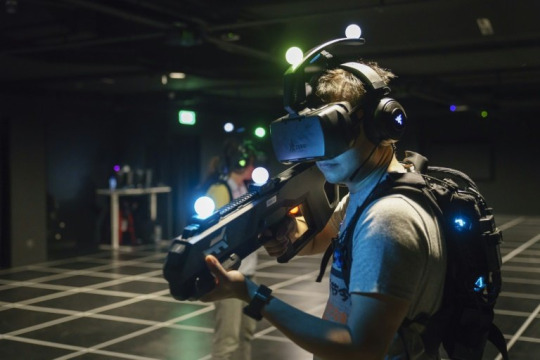
The “Half-life” refers to an immersive storytelling by the creative exploration of the VR, and the transaction of how the players do interaction with the upcoming narratives which is not easy. This game brings players directly within its wealth of detail by integrating tactile interactions, such as reloading weapons, rummaging through shelves for supplies and solving puzzles requiring all your senses. These mechanics serve to increase a player’s sense of presence in the story, creating a sensation of actually living the story, rather than simple watching it.
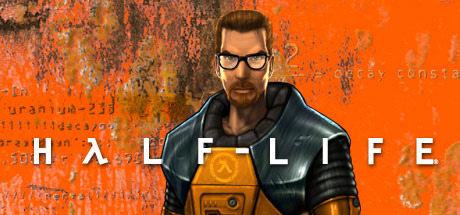
The concept is embodied cognition in that mental engagement and understanding is a function of physical actions in the game. In addition to playing through the story, players also interact with the environment in ways to further string along the tension, stakes and realism of the narrative. This means, for instance, loading ammunition into a weapon manually while being ambushed gives you that unparalleled layer of urgency and immersion that just makes you feel like god, adds extra stakes emotionally.
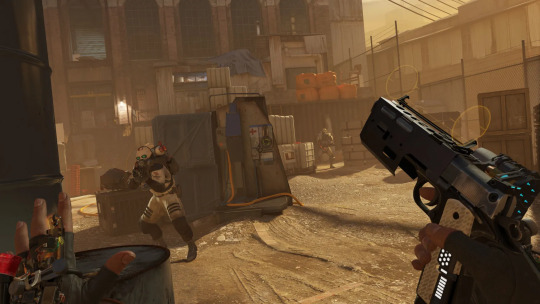
It demands a degree of interactivity that calls into question orthodoxy about stories, focusing instead on player agency and saliency. Unlike passive media forms like books or films, *Half-Life: The story is also played out at the pace of your choosing, with opportunities to rack up details and bond with characters and the world whereas present.
By setting a new benchmark for VR storytelling, Half-Life: Alyx, though, also demonstrates the capacity of the medium to substantially reshape narratives by sweeping away the barriers keeping them passive to creating audiences that are fully engaged with digital media and active participants (Chan, 2014; Ryan, 2003).
Such immersive narratives are emblematic of the move toward hyperreal experiences, where virtual environments μπορούν (Baudrillard 1988) elicit feelings more “real than the real.” Such an advancement emphasizes how VR is not only a new medium of storytelling but also a technology that can change how an audience engages.
Conculsion
This article, concerning Half-Life: Alyx as a strong benchmark attempt of VR storytelling is highly relevant to the understanding of the future of interactive digital media. It highlights how tactile interactions and embodied cognition turn storytelling into an active, emotionally charged journey rather than a passive experience. It is useful in understanding how VR engages audiences on the physical, emotional, and narrative level — an insight useful to my own creative and analytical practice. Interactivity and immersion is not just a technical feature — it is a core part of how players see, interact with and internalize narratives.This ties into VRs potential to rethink the part of the player, obscuring lines between group of onlookers member and story being . In practical terms, this lesson may encourage me to find approaches for producing interactive or immersive experiences of my own. In writing stories that react to user input and focus on the senses first, I hope to create experiences things that engage with audiences in potentially new and meaningful ways, and develop personhood with the audience present. This realization validates our colleague that a media with degrees of intervention across the continuum activates work beyond observation to devise active engagement of abstraction.
References
Baudrillard, J. (1988) Selected Writings. Stanford: Stanford University Press.
Chan, M. (2014) Virtual Reality: Representations in Contemporary Media. New York: Bloomsbury Academic.
Ryan, M.L. (2003) Narrative as Virtual Reality. Baltimore: The Johns Hopkins University Press.
0 notes
Text
Blog 9: The Visceral Side of Digital Media: Horror in "Resident Evil"




Digital media is such a masterclass in using the spine-tingling visceral potential it offers to create fear and tension, as seen in games or series like the Resident Evil series. Games achieve all this through insane jump scares and eerie sound effects, engaging players in an endless world of dread via resource management mechanics. Though heavily dependent on Freud’s theory of the uncanny, the series unsettles its players by entangling two familiar elements with two unfamiliar ones: monstrous creatures with human appearances or desolate settings where anything feels normal until some horror lurks out of sight. The blending puts players on edge, as if they are in that extra high, uneasy psychological space (Ash, 2013; Gregg and Seigworth, 2009).
What distinguishes Resident Evil is its ability to do so emotionally and physically. Players must steer through situations occupied with tension, paying attention to every bullet they use or any decision they make. The activity increases the fear as resources must be conserved, and split-second choices made, raising the stakes. Unlike passive media like films or books, players must physically deal with the horrors and respond in real time (Freeman, 2004).
The tension is further crystallized by subtle creaks, dark growls, or strange noises that explode into earshot, shaking the players’ senses beyond the visual. All these elements, coupled with heart-pounding gameplay, create a unique experience in its emotional and physical ability to evoke intense responses (Mobbs, 2015).
Somehow, it is Resident Evil that recalls how digital media blends narrative, mechanics, and sensory design into one shocking whole. It cranks up the responses to dizzying, mind-shocking intensities that, whether or not it succeeded in all regards, certainly revolutionized the limits of the immersive.
Conculsion
The visceral/immersive qualities of digital media explored as a case study through Resident Evil is highly relevant to my practice as a creative practitioner. It shows the strength of confederate narrative, sensory design, and interactivity in producing visceral emotional reactions. Through this analysis, I learnt how showing contrasts between both familiar and unknown (as highlighted by Freud with his idea of the uncanny) could create a tension that builds the level of engagement of a reader. Additionally, it shows the power of resource management and decision-making mechanics to raise the stakes and enhance immersion. These experiences can at that point be connected to my possess work by making multi-sensory encounters that are not essentially detached, but where the group of onlookers is dynamic and candidly contributed. Utilizing procedures such as unobtrusive sound design, layered stories, or challenging choices, I can bring out influence and build more complex, locks in, and immersive universes. As such, this mindfulness sets me up to look at the interesting ways in which digital media can extend and shape the domain of the conceivable with the story told, permitting for reactionary intrigued in not fair display but passionate and mental reverberation.
References
Ash, J. (2013) ‘Technologies of Captivation: Videogames and the Attunement of Affect’, Body and Society, 19(1), pp. 27–51.
Freeman, D. (2004) ‘Creating Emotion in Games: The Craft and Art of Emotioneering’, ACM Computers in Entertainment, 2(3), Article 8a, pp. 1–11.
Gregg, M. and Seigworth, G. J. (2009) The Affect Theory Reader. Durham: Duke University Press.
Mobbs, S. (2015) ‘The Evocation and Expression of Emotion through Documentary Animation’, Animation Practice, Process & Production, 5(1), pp. 79–99.
0 notes
Text
Blog 8: Diversity, Inclusion, and Gender: Women in Gaming
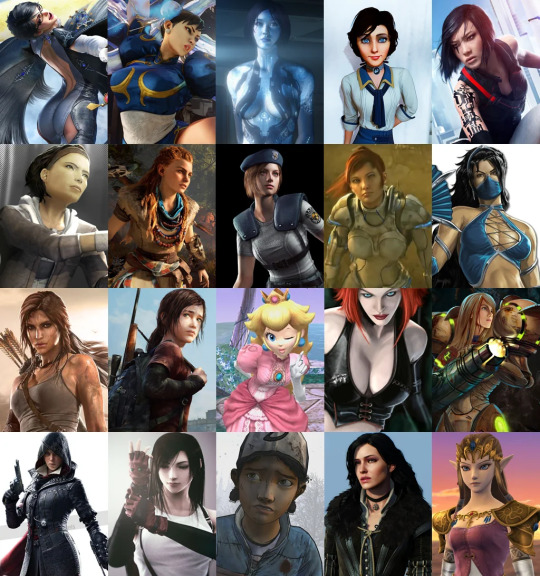
As the previously video games have looked up for the depictions of the women which marginalize and the reductively which represent them, like the “damsel in distress” or the oversexed heroines. As earlier, the Tomb Raider implications have illustrated the trends exactly, with the Lara Croft not just only serving as the iconic adventure but as the male gaze as well as. But, of course, these days the game has evolved to portray the women as the more layered and complex, and The Last of Us Part II is a great example. The main character, Ellie, is portrayed as an incredibly complicated, very human, flawed, complex person caught, mired in themes of love, grief, and revenge. She makes the experience of the player more than gender so players can relate to her humanity and struggles (Haraway, 1988; Butler, 1999).

This aligns with feminist media theory that constructs media depictions of women since it is dominated by patriarchy, criticizes these traditional portrayals of women, and demands for the broadcast of markets of representations that are reflective of real-world diversity. Which is what The Last of Us Part II does: not just Ellie but other strong female characters like Dina and Abby. A remarkable and defiant breaking of stereotypes — emotional vulnerability, physical strength, and agency — are highlighted in these women. This also resonates with Mulvey's (1975) concept of the "male gaze," emphasizing how these characters subvert objectification by demonstrating their autonomy and narrative significance.
These depictions also go beyond representation and are part of those larger cultural discourses that normalize in the gaming world the presence of their strong, multifaceted women. Still, the game's reception shines a light on longstanding tensions surrounding deep-rooted prejudices flowing through the gaming community that many people within the audience don't feel comfortable with the game's progressive renders. But The Last of Us Part II and games like it begin to pull this work forward by allowing equitable storytelling to happen — telling space for authentic representation of diverse gender identities and experiences (Gill, 2007)
Conclusion:
Having said that, this analysis which demonstrates the ability of media to recompose gender narratives is particularly useful and relevant. From my analysis of The Last of Us Part II, I have seen how multilayered and realistic depictions of women can move beyond caricatures and allow for more profound emotional engagement with audiences. Learning feminist theories i.e. Haraway, Butler and Mulvey, how media constructed, deconstructed and reconstructed gendered representations have helped deepen my understanding of gender representations and its representation in media during media studies. This reflective assessment underlines the necessity to challenge cultural narratives and probe interconnections with socio-political contexts that dictate the media representations. This is the part where I get to take this new understanding and apply it somehow. I can apply these learnings by having a more critical lens when it comes to the creating and understanding of media artefacts, and to ensure that stories I am consuming or telling are inclusive, or are at least good faith attempts to be inclusive. Furthermore, knowing how progressive storytelling elicits resistance and growth in audiences gives me the tools necessary to engage in and meaningfully shape cultural dialogues. I use this knowledge to fight for equality— representation in media as a practice for real and important storytelling.
References:
Butler, J. (1999) Gender Trouble: Feminism and the Subversion of Identity. 2nd edn. New York: Routledge.
Gill, R. (2007) Gender and the Media. Cambridge: Polity Press.
Haraway, D. (1988) ‘Situated Knowledges: The Science Question in Feminism and the Privilege of Partial Perspective’, Feminist Studies, 14(3), pp. 575–599.
Mulvey, L. (1975) ‘Visual Pleasure and Narrative Cinema’, Screen, 16(3), pp. 6–18.
0 notes
Text
Blog 7: Visual Culture and Identity: Representation in "Cyberpunk 2077"

Cyberpunk 2077 goes exactly with the themes to analyze the visual culture, by offering the important portrayal of a dystopian future where humanity and technology intertwine. The players are extensively character-made options, which allow them to shape their avatars counterintuitively to traditional concepts of identity. More than appearance, some of these options offer players the ability to select body changes and traits that showcase the fluid and multi-sided nature of identity in the digital and virtual world. Following Stuart Hall’s theory of representation, which argues that identity is a production that is never complete, always in process, and constituted within representation itself (Hall, 1989), this customization reflects broader cultural discourses around identity. This customization is made in correlation with social mediums, Death Claw as a master mechanic of cultural machinery, and Night City as a neon-lit world testament to the importance of visual culture bent on aesthetic diversity, individuality, and consumption. The gameplay and narrative mechanics explore one of the significant aspects of identity as a commodity. The improvement in the cybernetic enhancements to helps one navigate a world where the appearances carry the same weight as abilities(Crane, 2000).

Yet the representation of marginalized communities was a huge source of controversy. Cyberpunk 2077 wanted to show diversity, but some critics said it didn’t reflect it, or gave the impression of it, showing the complications and difficulties involved when trying to create identity in a fictional story. This highlights how important sensitivity is to how we choose to put aspects of culture and social identity on screen, whether meaningful or not, when dealing with visually driven storytelling media. According to Hall’s idea that representation is always in process and integral to identity construction, Cyberpunk 2077’s attempt at showcasing diverse identities, while controversial, reflects the ongoing negotiation between society’s aspirations and stereotypes.
Conlusion:
So this analysis of Cyberpunk 2077 is extremely relevant and insightful into my understanding of visual culture and identity. My critical lens, sharpened by understanding how the game unpacks and complicates technology, individuality, and representation, has deepened my appreciation for the intricate ways that media shapes and subverts identity. The valuation of fluid, multi-sided identity as framed by the game’s customization mechanics offers an interesting model to think through phenomena in society at large and my own work.
In particular, depending on the visual nature of the content, sensitivity to how cultural and social identity is represented is a paramount concern. Cyberpunk 2077's controversies highlight the difficulty of authenticity and diversity in storytelling. Understanding this motivates me to be more intentional and critical about representation, pushing myself to ensure that what I write is both reflective of, and an active participant in, the greater cultural dialogue.
In the future, these lessons are practical for me as I will be equipped with the knowledge to scrutinize the choices I make about representation in my work and a drive to accurately represent the identities in my stories. Recognizing this power of visual culture to shape discourses in society, I believe that the media has to be produced in a way that is intentionally designed to resonate with the audiences in a meaningful way and result in contributions to an inclusive and reflective cultural landscape.
References
Hall, S. (1989). Cultural Identity and Cinematic Representation. Framework: The Journal of Cinema and Media, 36(36), pp. 68–81.
Crane, D. (2000). Fashion and Its Social Agendas: Class, Gender, and Identity in Clothing. Chicago: University of Chicago Press.
0 notes
Text
Blog 6: Semiotics in Digital Media: Symbolism in "Dark Souls"

The master class in the semiotics indeed, “Dark Souls” took the advantage of visual and environmental symbols for absorbing the players for an enigmatic and unforgiving world. The bonfire is one of perhaps the most iconic symbols within the sport, a place of safety, respite, and progress in a world filled with hazard. Bonfires are also checkpointing, a way to heal and save your progress, but more importantly, they are a beacon of hope, in the dead, terrible landscape. Deeply embedded game and story symbols, these resonate on practical, emotional, and thematic levels, and within the gameplay (Barthes, 2009).
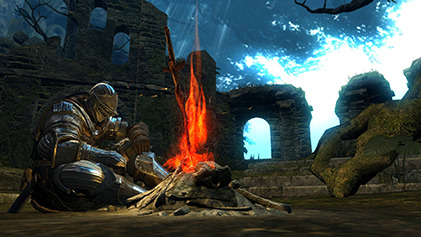
The symbols are as the signs for carrying the layered meanings in the keeping with the Roland Barthes' semiotic theory. As taken a bonfire, like example; in Dark Souls it signifies the bonfire of precious relief, and how real it is, and that it winks out all too quickly only to blink back on again. Just like the decayed architecture and scattered broken ruins dotted all over the world of game, they represent decayed and lost civilizations and forgotten histories which players are encouraged to find out the narrative aspects of them.
What makes the Dark Souls clear is how it tells its goods with semiotics and not words. Players are allowed to put their own interpretation on the visual cues, item descriptions and environmental detail which will be in order to figure out the lore and themes of that world. Active interpretation becomes a part of that process, adding to storytelling so that its brevity isn't limited to explicit dialogue or cut screens. As the Dark Souls completes this through semiotics, it is presenting a tremendously immersive, and the concomitantly challenging, narrative wherein players pry a narrative from the many signs, symbols, and meanings present in every nook and cranny of its design.
Conclusion
This semiotic flight whereas having everything to do with the more extensive setting of Dull Souls as a generation has been illuminating and significant to me as a imaginative professional. Through this investigation, the centrality of closely-embedded images as being solid sufficient to reflect its many-faceted profundities of part, hopelessness and anguish has been brought into point of view, rising above medieval strategies of portrayal and multiplying up for a notable involvement tasting distinctive subtleties at each level. Learned from Dull Souls how mechanics don't have to be be expressed unequivocally, and how them can communicate frameworks and connections between them, by observing the natural, visual that with rehashed presentation brings out feelings and rouses elucidation without depending so much on stories.
Steven notes that this knowledge makes a difference you the foremost in your own work, emphasizing how subtle narrating can, and ought to, be executed, too trusting that your group of onlookers will lock in together with your fabric effectively. It has made me realize that indeed the foremost oversimplified pieces — a repeating, planetary image or an unpredictably planned environment — can be significant apparatuses in a writer's arms stockpile for unequivocally passing on topics or making a world that feels lively.
These concepts can impact what I do inventively moving forward, making visual and relevant prompts in stories so that the other individuals find their possess meaning. It's a strategy that deepens not fair the setting, but the engagement, guaranteeing discussion after the shades drop. Actualizing semiotics permits me to create work like Dim Souls that welcomes each person to translate it in their possess individual way.
Reference
Barthes, R. (2009) Mythologies. London: Vintage.
Bonfire. (2024, December 21). In Wikipedia. Available at: https://en.wikipedia.org/wiki/Bonfire_(Dark_Souls) (Accessed: 18 December 2024)
0 notes
Text
Blog 5: Strategies of Realism: Immersion in Open Worlds
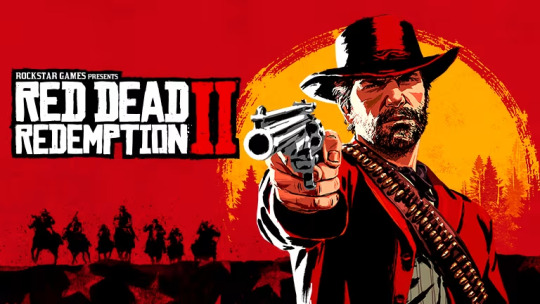
When it comes to the realist gaming, the interplay between detailed world building and the medium is often one of the themes that hold it together, it’s there in “Red Dead Redemption 2” for example. But it is the cutting edge of graphics, character animations and even AI driven behaviors that give Rockstar Games' open world the life it needs. Every little detail is a cue to making the game feel alive from swaying trees from a passing breeze to NPCs joining each other for unscripted interactions. It allows players to hunt, fish, explore the world, or watch nature just go its own way, with animals migrating, towns bustling to new acts, each making the world feel increasingly real.
The creation of a believable, immersive environment has close affinity to Ferdinand de Saussure’s idea of semiotics, especially the signifier and the signified, something similar to this (Sørensen & Thellefsen, 2022). In the game, 'signifiers' such as swaying trees, and what NPcs do, help to paint a picture of a believable world and, the 'signified', is the mental concept or experience of realism. Together, these together form a system of signs who’s meaning the game produces and reinforces with realism.
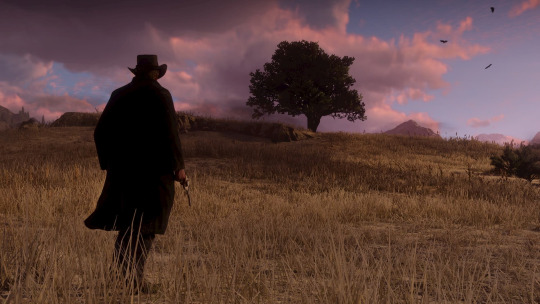
It is unscripted event where birds rotate in circular motion.So there is dead corpse nearby.

Realism, however, isn’t without its bounds — specifically, in games like Red Dead Redemption 2. By scripted events, got some extreme interruption or, with some of the occasional technical glitch, a reminder that the world they're playing in is, after all, an artificial construct. For the instance, NPCs can be dynamically reactive to the player actions, but if they need to complete certain mission objectives, or part of a narrative driven story – then the player is forced into a pre-determined way by which breaks their illusion for an whole freedom. This reflects Jean Baudrillard’s idea of hyperreality, in which the boundaries between reality and simulacrum merge into an environment that “is more real than real.” The Players become hyperreal as they lose themselves to a world of meticulous design in “Red Dead Redemption 2” that is completely fictional but feels very real. The interplay of this reality with its highly crafted simulation in the digital sphere encourages both greater sense of immersion and a subversive interrogation of realism as such, an urge of creating its way by the myriad of variants under this reality’s dominant simulation.
Conclusion
The exploration of realism in Red Dead Redemption 2 is all the more relevant here, since it demonstrates the degree to which a reliable design and narrative systems can be combined to explore new depths against the limits of digital media. From this I’ve learned how attention to detail and world-building can facilitate emotional and intellectual engagement, and in turn facilitate a better experience of media artifacts. And I feel these learnings can be transferred over to my own creative practice in terms of a way to create space/environment or narrative that provide audience with immersion. When the designing interactive experiences or analyzing media artifacts, each component must be balanced between realism and creative freedom, which will guide how I design stories, interactivity, or other forms of media work.
References
Baudrillard, J. (1981). Simulacra and Simulation. University of Michigan Press.
Sørensen, B., & Thellefsen, T. (2022). Ferdinand de Saussure in Contemporary Semiotics. Language and Semiotic Studies, 8(1), 1–5. https://doi.org/10.1515/lass-2022-080101
0 notes
Text
Blog 4: AI Co-Creator: Exploring Procedural Storytelling in Games

Video was and still is the medium of choice for players, but until recently, the implementation of storytelling in that medium has stagnated once we reached a solid algorithm for addressing and persisting relationships among characters. Games like No Man’s Sky, which uses procedural generation to make the process of building an expansive, unique universe with billions of planets containing their own unique ecosystems, flora, and fauna, play a part in this new wave. Instead of handcrafting every part, the developers created an elaborate algorithmic system to allow AI to produce these worlds independently (Freiknecht and Göbel, 2020).
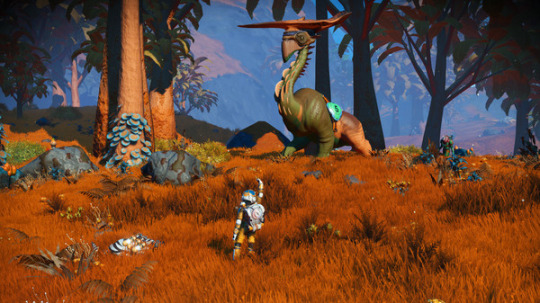
This blurs the human and machine authorship line. The system of procedural generation sets rules and parameters, yet the content that comes from it—its worlds, its creatures, its encounters—is a joint product of the intent of the developers and the processes of the algorithm. This is where AI starts serving as a co-creator, shaping the experience such that even the developers cannot fully predict how it will turn out (Freiknecht and Göbel, 2020).
Ritual storytelling resonates strongly with Roland Barthes’ famous concept, “The Death of the Author.” Barthes argued that a text's meaning is not the product of its author but is instead created by the audience's interpretation (Barthes, 1977). In No Man’s Sky, players are key to interpreting and living in procedurally generated worlds. The way players travel through the game’s universe becomes personalized via their exploration choices and interactions in the digital space.
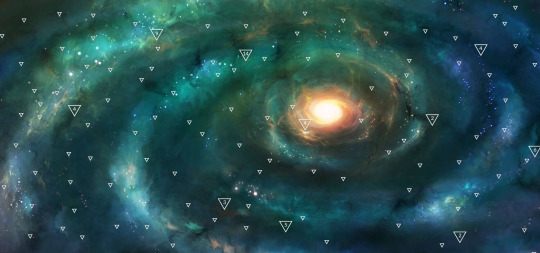
This shift reorients traditional authorship by centring narrative control around nonhuman collaborators: AI, developers, and players. Games like No Man’s Sky bring new language to storytelling in our digital media through the interplay of technology, design, and agency.
Conclusion
Games have not only been a study of agency and interactivity, but also authorship and ambition, and AI and procedural storytelling also demonstrates how traditional ideas of authorship are changing as a result of the resources available in digital production. This is interesting to me because it showcases how AI can be a partner in creativity rather than just a tool, allowing designers to explore new ways of creating lively and ambulatory stories.
From this, I’ve come to understand how procedural systems like they’re using in No Man’s Sky [help] to blur the line between human and machine authorship, and help focus on the role that the audience plays in interpreting and personalizing narratives. It revealed to me how technology, design, and user agency come together to create new ways of telling stories.
Or I could be careful to apply this knowledge as I, too, engaged with procedural generation in my work, like I do in the context of game design or interactive media projects. Using algorithmic systems, I could create flexible, tailored experiences for audiences, with AI not merely as a means to be more efficient but a central part of the creative process. This realization makes me reconsider the conventions of authorship and collaboration in digital media.
References
Barthes, R. (1977) Image, Music, Text. Translated by S. Heath. London: Fontana Press.
Freiknecht, P. and Göbel, S. (2020) ‘Procedural Generation of Interactive Stories using Language Models’, Proceedings of the 15th International Conference on the Foundations of Digital Games (FDG '20). Association for Computing Machinery. Available at: https://www.pcgworkshop.com (Accessed: 7 November 2024).
0 notes
Text
Blog 3:Intertextuality: Shared Narratives in Gaming Universes
Unity is a defining element of the game narratives, allowing the blending of the different worlds and the stories for creating the deeper, interconnected the experiences. Julia Kristeva’s theory of the intertextuality underlines how the media texts derive the additional meaning through the references to some other works. The phenomenon in gaming is majorly seen in titles such as Kingdom Hearts and the Assassin's Creed Franchise (Jenkins, 2020).
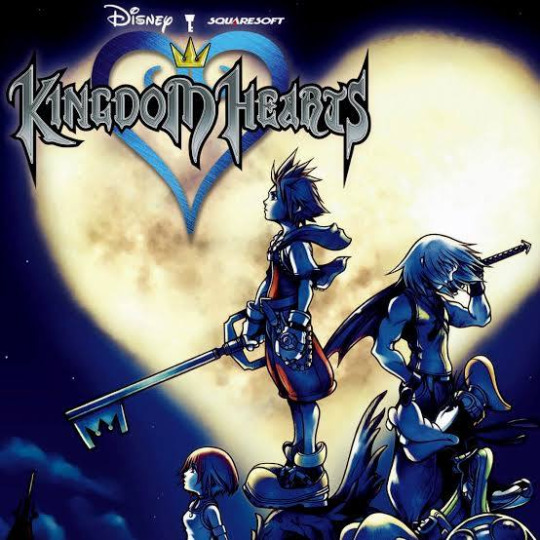
The Kingdom Hearts exemplifies the intertextuality by the blending of characters and the settings from the Disney’s broad catalog by the fantasy worlds of the Square’s Enix’s Final Fantasy series. The players can fight with the Goofy and Donald’s while also exploring some places like Agrabah or Hollow Bastion, all within the overarching the storyline uniquely to the series. A blend of friendly and newly creates an rich tapestry of the narrative layers, the appealing of fans of both the Disney and Final Fantasy, and generating empotional connections rooted in the nostalgia. It bridges these stories together in shared universe around which Kingdom Hearts draws players in through these connections.

But the Assassin’s Creed franchise blends its fictional story with historical events and real-world figures. Assassin’s Creed II will takes place in the Renaissance Italy, as having the player interacts with well-known figures like the Leonardo da Vinci, while uncovering a hidden plot within the Brotherhood of Assassins. The interplay between fiction and history results in an immersive experience with a heavy dose of history, and a good story.
Intertextuality in gaming reflects the ability to combine art forms and fill the cultural gaps. Games like Kingdom Hearts and Assassin’s Creed show how intertextual storytelling can deepen player engagement by connecting all narratives and getting into the emotional power of nostalgia and popularity. This phenomenon also highlights the rise of transmedia storytelling, where interconnected narratives distance between multiple platforms and digital media.
As games continue to evolve, intertextuality will play a more significant role in shaping their narratives and creating experiences that reflect on both personal and cultural levels.
Conclusion
So, this exploration of intertextuality in gaming is rather profitable because of how multilayer storytelling is developed easily. Through the infusion of familiar concepts into new worlds as well as emotional through-lines, games can not only create emotional connections to disparate audiences but also explore previously unexplored connections. Understanding this is a very relevant part of my growing as a creative practitioner as well — because it is a strong reminder to me that nothing comes out of thin air, that everything is built on something else, and that I should take as great inspiration in my own work. From here onwards, I can use this analysis to borrow intertextual elements into my own work by including cultural points or linking disparate narratives with each other for compelling multidimensional stories.
References
Jenkins, H. (2020). Revisiting convergence culture in games: Intertextual storytelling and shared universes. International Journal of Digital Media, 28(3), pp. 204–218.
Robert and RagnarokAngel (2022, April 4). ‘Wow, that Escalated Quickly: Goonhammer Reviews Kingdom Hearts’, Goonhammer. Available at: https://www.goonhammer.com/wow-that-escalated-quickly-goonhammer-reviews-kingdom-hearts/ (Accessed: [1 November 2024]).
0 notes
Text
Blog 2:Medium Specificity: How Platforms Shape Gaming Experiences
An profound impact on the platform on which a game is played on the storytelling approach and the overall user-experience. Such like the Mobile, PC, and console platforms individually cater the player needs, the preferences, and the technological capabilities, to create a rare route for the storytelling. This variation exemplifies the Marshall McLuhan’s theory of the medium specificity, which emphasizes that how the characteristics of a medium influence the way of content is delivered and consumed.
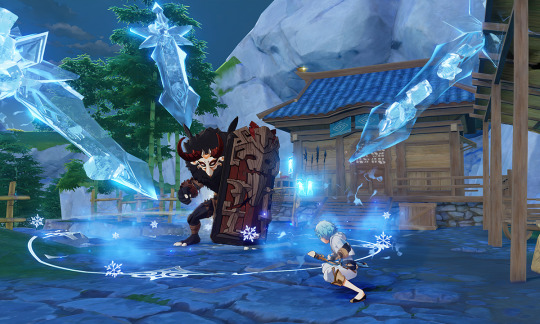
The mobile gaming, as shown the tiles such like Gentian Impact, must focuses on accessibility and the portability, by offering an episodic content and the gacha mechanics align with the modern platforms on the go-culture, to by promoting microtransactions and frequent interactions (Whitson & Simon, 2021). The storytelling often revolves around easily digestible quests and some events that players can engage with casually, making the narrative increasingly flexible and episodic in design. The mobile platforms thus the favor bite-sized of the storytelling, and staying the players immersed without demanding for long-term commitment.

Somehow, console exclusive game such as The Last of Us, focus more on cinematic storytelling and take advantage of the console’s powerful hardware to show rich designs, high definition graphics, audio immersion. For instance, visuals like The Last of Us utilize photorealistic visuals, a gripping story wrapped in a good narrative, coupled with a dynamic character development that keeps players hooked with a deep and harrowing tale of survival and humanity.

The PC platforms do offers customization and player agency to users playing, who like the ability to make the gaming experience be what they want (Juul, 2022).PC platforms can also supports a variety of gameplay styles, from story games like Red redemption 2,Gta 5..., to highly competitive eSports titles games such as valornt,FIFA,Dota 2..., and to open-ended sandbox games that enable a wide opportunity of narrative possibility. This focus on user agency exemplifies the degree to which PCs work to transform players from passive consumers of a narrative into active participants in the story.

The variations on these vary platforms prominently underline how the platforms can shape the game narrative, producing different game experiences suited to their respective medium-specific traits.
Conclusion
Diversity extends to the games available on PC platforms, ranging from hyper-competitive eSports titles to open-ended sandboxes that can foster any number of narrated experiences. This player agency highlights the way in which PCs are invited to take on an active role in telling the story.
If you wanted to get schooled on medium specificity in gaming, it is very useful to understand how platforms create the experience of stories. I have learned that the medium plays a role beyond delivering a story as is; it shapes how a story gets told, how it gets delivered to its audience, and how the audience receives it. It also aids analyzing games in ways that go beyond their stories and into how a platform’s uniqueness is shaped into narrative.
This could be applied to my creative practice in knowing how to adjust a storytelling style to platform For example, designing for mobile I would prioritize flexible, episodic content that fits users on-the-go lifestyle. For console I could focus on cinematic, emotional storytelling that leveraged the horsepower. But on PC, the level of immersion and personalization would mainly involve adding customization and player agency to the gameplay.
Not only can this approach enrich my reading of and response to existing games, it can further my understanding of the relationship between medium and narrative. This revelation would drive my growth as a creative practitioner, forcing new narratives tailored to specific platforms.
References
Juul, J. (2022) A casual revolution: Reinventing video games and their players. 2nd edn. Cambridge, MA: MIT Press.
Whitson, J.R., Simon, B., and Parker, F. (2021) 'The Missing Producer: Rethinking indie cultural production in terms of entrepreneurship, relational labour, and sustainability', European Journal of Cultural Studies, 24(2), pp. 606–627.
0 notes
Text
Blog 1:Narrative: The Evolution of Storytelling in Video Games
Over the decades storytelling in video games has made itself a popular thing for developers to do, effectively using the advanced technology we have become quite an art itself. The progression parallels the further advancement of tech’s capabilities, and the mounting requirements of more interactive, personally relevant media (Therrien & Picard, 2020). Here, in early games like Super Mario Bros. (1985), the story was simple to point out, because it was little more than a support for gameplay. Narrow paths dictated everything, with little to no narratively dense story or room for exploration. Mario’s plot was simple: Save Princess Peach, as there were no alternate endings and little character penetration.

In the contrast, modern video games like The Witcher 3: Indeed, Wild Hunt (2015) are some excellent example of just how far forward storytelling has come to the extent that players have the opportunity to shape the narrative. In doing so, it supports approaches to interactive media that privilege user agency and participation. And players are now no longer stuck in a static story, they are brought in as co-creators of their own journey (Isbister, 2021).

The Witcher 3 sets you as Geralt of Rivia, while a richly detailed world full of morally ambiguous conquests(Figure 2). As you make these decisions these choices twist and turn the branching narrative structure of the game, changing relationships, altering events and even changing the ending of the game. Say for instance, how Geralt deals with characters like Yennefer or Triss can affect the story, and how decisions made during political quests affect how many kingdoms survive.
The industry is moving toward branching narratives, the indicators of which are the industry’s emphasis on agency, immersion and emotional engagement. Such games merge player-driven storytelling with complex and changing worlds that increase the overall user experience. They run deep with players and provide players not just a game but a personal story dictated by their own choices. In this evolution of video gaming, it’s clear that video gaming comes in between art and technology to redefine storytelling in the digital age.
Conclusion
The progression is illustrative as well as pertinent to my comprehension of interactive media. For, it is this shift from a linear narrative to a branching one, from listening to sounding out, which reflects not merely a technological development but a more unsettling cultural turn towards agency and engagement. In this context, the understanding of storytelling in games can be seen as both whimsical and serious, as a source for escapism as well as a medium through which abstract concepts and emotions can be examined.
Knowing about these innovations gives me important information about the intersection of art and technology, which I can apply to my own creative and academic endeavors. At least in part, this narrative structure plays a big part in how I approach design, media analysis, and my understanding of digital culture because it reminds me of the ways in which engagement allows for audience connection, in a way that is more intimate than traditional narratives. This view fuels me to challenge myself in all undertakings, incorporating these findings into creating unforgettable moments that are both meaningful to the world and myself.
References
Isbister, K. (2021). How games move us: Emotion by design (Updated ed.). MIT Press.
Therrien, C., & Picard, M. (2020). From hypertext to hyper immersion: Video games and the cultural dimension of storytelling. Journal of Gaming Studies, 12(4), 231–249.
0 notes
Text
Chasing a Dream: My Path to Game Development
My ambition to develop games first came into my mind while I was an undergraduate student, and then, working as a software developer, this dream about game development kept on growing increasingly. I started making ways to make it happen, and that is what led me to this MA program in Game Art and Design.
I decided to create this blog as a way to share my experiences, learning, and steps I am taking toward my goal of game development. In this blog, I will be talking about the skill set I am building in the program and sharing my journey into moving closer to being a game developer. I hope that this will be interesting to anyone with curiosity about game development, or for others like me who are doing a switch into this field.
0 notes